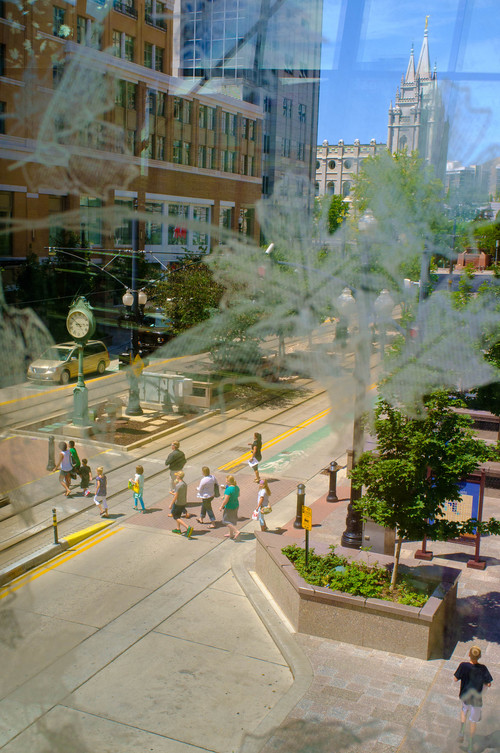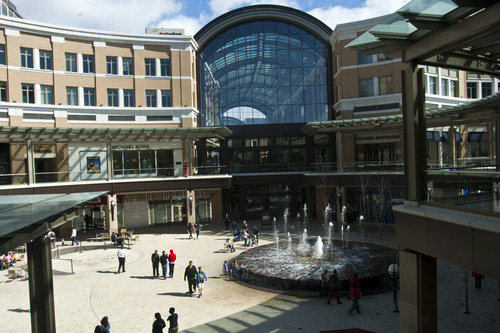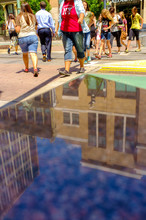This is an archived article that was published on sltrib.com in 2014, and information in the article may be outdated. It is provided only for personal research purposes and may not be reprinted.
Retailers in Salt Lake City's core amassed a record $800 million in sales in 2013 as younger residents, suburban dwellers and tourists sought out downtown restaurants, bars, stores and night life.
Downtown's business clout within Salt Lake County and its overall vibrancy have improved dramatically in the past year, according to an annual snapshot of the core's economic and overall health. Defined by the 84101 and 84111 ZIP codes, the central business district now makes up 10.8 percent of the county's total retail sales in key categories, up from 8 percent in 2005.
An estimated 77 percent of Utahns said they have a positive perception of downtown Salt Lake City these days, according to a recent poll. Nearly half the respondents said they have a sense of ownership and connection to Utah's capital, which is an all-time high and up from about a third of all residents in 2009.
"Downtown doesn't belong just to the people who live or work downtown or just to the people of Salt Lake City or Salt Lake County," said Jason Mathis, executive director of the Downtown Alliance. "It really is a statewide asset, and it's important that residents of the entire state feel that way."
City Creek Center, the LDS Church's $1.5 billion-plus retail development in the heart of downtown, has accounted for much of the business surge. After a slow start when it opened in 2012, the open-air mall near Mormonism's landmark Temple Square is beating revenue projections, fueled by unexpectedly high patronage from out-of-staters, who now make up as much as a third of the customers.
Once-cautious predictions of additional development on blocks immediately surrounding City Creek are coming true, when only a few years ago much of downtown was sprinkled with boarded-up buildings and the streets fell quiet at night.
Last year saw dozens of new office buildings, residential complexes, hotels, theaters and sizable public structures break ground within the 500-acre central business district. A nascent sense of 24/7 liveliness is starting to rev up. And while pockets of urban blight, vacant storefronts and prominent parking lots aren't gone from downtown's landscape, the urban heart does seem to be turning.
"Our downtown is fundamentally different than it was just a few years ago," said Linda Wardell, general manager for City Creek Center.
And it's not just the new mall working in downtown's favor.
Thousands of new multifamily residential units, several new high-profile office projects, increased use of public transit and growth in urban jobs are also spurring downtown's comeback.
"We're just as interested in the development that is on the horizon or just being completed," Mathis said, "as we are about the things that have been completed over the last few years."
A block south of City Creek, construction is underway on downtown's biggest public project: the city's performing arts center, to be called the George S. and Dolores Doré Eccles Theater, along with the new 111 Main office tower.
Employers are increasingly drawn to such new office projects, including 222 Main and 101 Tower, for the advantage those buildings give them in attracting talented workers, said Scott Wilmarth, senior vice president with CBRE, the commercial real estate service firm.
Construction projects are coming online faster, top employers are moving in and lease rates charged for space in these new high-rises are breaking records, Wilmarth said.
"These trends shows we're maturing as a business community,'' he said. "We're starting to see the value of having a labor force that can live and work in the central business district.''tsemerad@sltrib.com
Twitter: @Tony_Semerad















